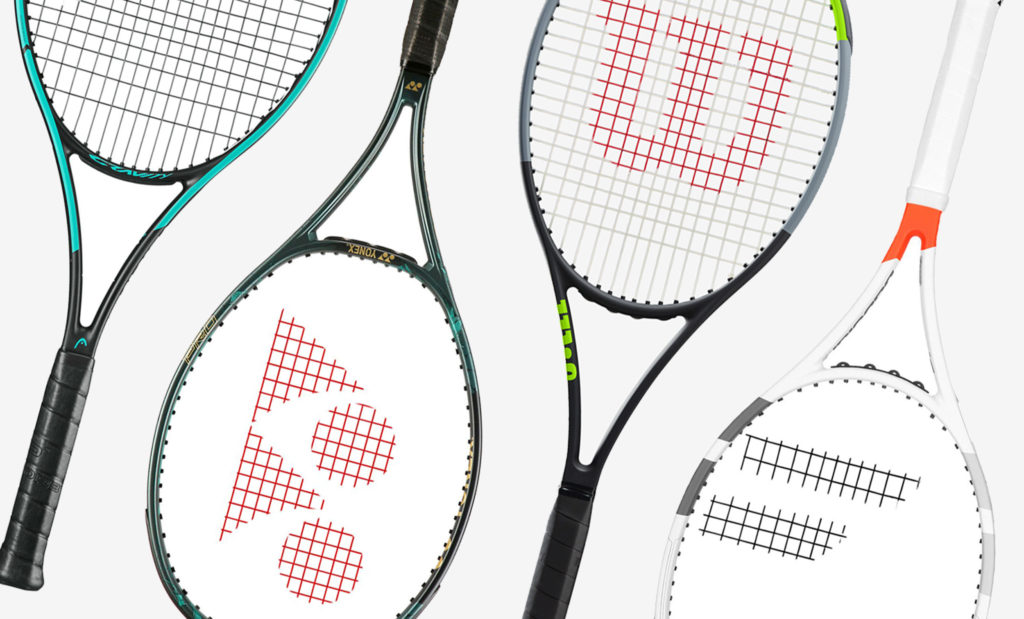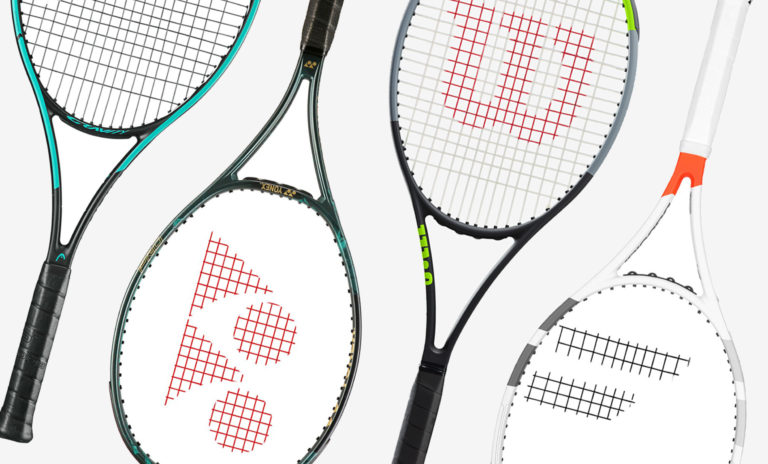When it comes to tennis, the racket you choose can make a enormous difference in your performance on the court. One of the most important aspects of choosing the right racket is the tennis racket head size, which can affect everything from your power and control to the size of your sweet spot. This article will guide you through the different racket head sizes, their benefits, and how to choose the best one for your game.
What is Tennis Racket Head Size?
A tennis racket head size is the total area of the racket’s string bed, typically measured in square inches or square centimetres. In other words, it’s the size of the space inside the racket’s head that you’ll be able to hit the ball with.
The head size of a tennis racket can play a big role in the amount of control and power a tennis racket provides, as well as the size of the racket’s sweet spot.
A Brief History of Racket Head Sizes
In the early days, most tennis rackets were made of wood. They had very small head sizes in the 65-70 square inches range, were very heavy and difficult to swing.
However, as time went on, racket manufacturers began to make advancements in the materials they were using to make tennis rackets lighter. In the late 1960s, the first metal rackets were introduced. While metal allowed for lighter rackets, the head sizes did not change significantly.
The 1980s brought a revolution in racket design with the introduction of graphite and composite materials which were lighter and stronger and allowed for larger head sizes without increasing the racket’s overall weight. In 1976 Prince introduced the Prince Classic, an “oversize” racket concept which had a head size of 110 square inches. It was a game-changer, as the larger head size provided a bigger sweet spot, more power, and a lot more margin for error.
Fast forward to the 1990s and racket manufacturers were offering a wide range of head sizes, from mid-size (85-97 square inches) to mid-plus (98-104 square inches) and oversize (105-135 square inches), which allowed players to choose a racket to suit their playing style and skill level. Today, most rackets on the market fall in the mid-plus size range, aiming to strike a balance between power and control.
Understanding Tennis Racket Head Size

- Mid-size (85-97 square inches): These rackets have the smallest head size, offering players a high level of control and precision. They are typically best suited to advanced players who have perfected their technique and timing and are able to generate all the power themselves.
- Mid-plus (98-104 square inches): These rackets strike a balance between control and power, making them a popular choice for both intermediate and advanced players. The mid-plus size offers a slightly larger sweet spot than mid-size rackets, providing a mix of both power and precision.
- Oversize (105-135 square inches): Rackets with oversized heads provide the largest sweet spot and generate more power, which can be particularly beneficial for beginners or players who prefer a more forgiving racket. However, they tend to offer less control compared to smaller head sizes so can be difficult to play with for intermediate and more advanced players.
Popular Rackets and Their Head Sizes

Here are some popular rackets across different head size categories:
- Mid-size (85-97 square inches): includes legendary rackets like the Wilson Pro Staff 85 and HEAD Prestige Classic, and modern rackets like the Wilson Pro Staff RF97, the Yonex Vcore 95 or Yonex Vcore Pro 97 (now Yonex Percept 97) and the Babolat Pure Strike 97.
- Mid-plus (98-104 square inches): by far the most common size and includes most modern tennis rackets like the Wilson Blade or Ultra, the Yonex Vcore or Ezone, the Babolat Pure Drive, Pure Strike or Pure Aero and Head tennis rackets including the Head Speed, Gravity, Extreme, Radical and more.
- Oversize (105-135 square inches): includes rackets best suited to beginners like the Head Ti S6, Wilson Clash 108 or the Wilson Hyper Hammer.
Choosing the Right Racket Head Size for Your Game
When it comes to choosing the right tennis racket for you, head size can be an important aspect though there really isn’t a right or wrong answer. That said, as a general rule of thumb, we’d recommend the following:
- Mid-size (85-97 square inches): pretty much reserved for advanced players. These days, I wouldn’t recommend using a racket with a head size smaller than 95 square inches. However, if you’ve perfected your technique and are looking for more control, mid-size rackets might be the perfect fit.
- Mid-plus (98-104 square inches): suitable for everyone, beginners and pros alike. Mid-plus rackets offer a perfect blend of power and control so they can be a great fit for any player, whether it’s the first racket you pick up or you’ve been swinging one for years!
- Oversize (105-135 square inches): best for beginners, senior players or players with reduced mobility. Oversize rackets will offer a much bigger sweet spot and margin for error, so they’re a lot more forgiving if you don’t quite time the ball perfectly.
However, it’s also worth knowing that so many other factors can play a role in how a racket performs. Be sure to check out our tennis racket anatomy guide for more information.
Racket Head Size - FAQs
How does head size affect tennis rackets?
Generally speaking, tennis rackets with a bigger head size offer more power and more margin for error with a bigger sweet spot, while smaller head size rackets offer more control.
What head size do most pro tennis players use?
These days, most pro tennis players use tennis rackets with a 98 or 100 square inch head size as they offer players a good balance of power and control.





